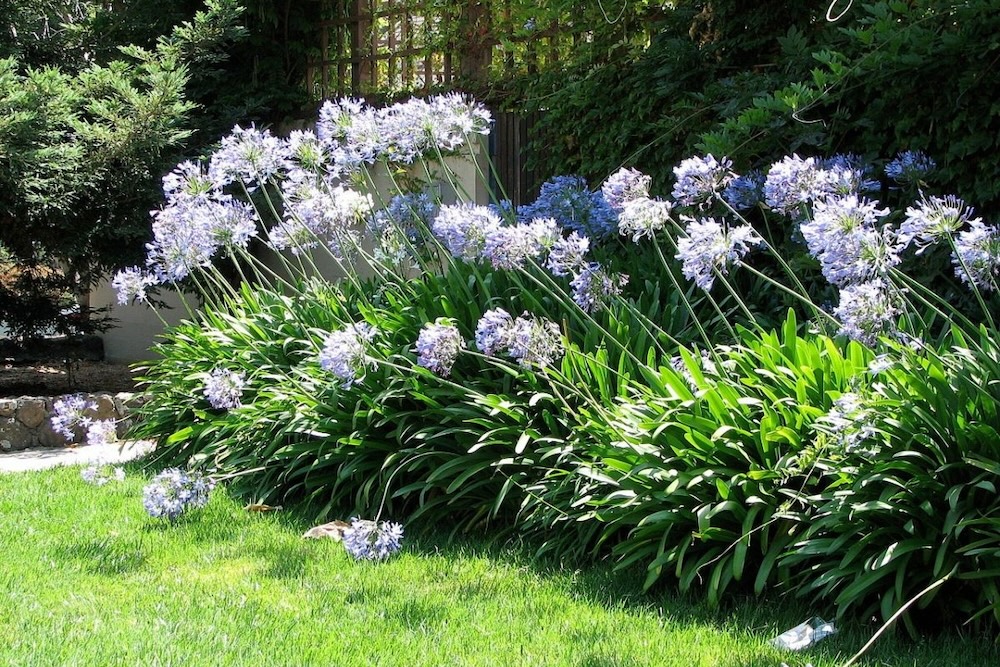Grasping the Art of Agapanthus Care: Necessary Actions for Healthy Growth and Lively Blooms
In the realm of horticulture, the growing of agapanthus stands as a satisfying endeavor for those that look for to support these classy flowering plants. From selecting the appropriate range to mastering pruning methods, the journey towards growing flourishing agapanthus plants is multifaceted and holds the vital to unlocking the full possibility of these botanical gems.

Selecting the Right Agapanthus Range

When picking the ideal Agapanthus selection for your garden, consider factors such as climate suitability, flower color, and development routine. In addition, take into consideration the climate in your region to make sure the Agapanthus selection you select can flourish in your details problems. Recognizing the growth behavior of various Agapanthus selections is important for correct positioning within your garden.
Ideal Planting Conditions
Taking into consideration the optimum ecological requirements is important for effective Agapanthus growing. Agapanthus plants are delicate to cool temperatures and ought to be secured from frost throughout winter season months.
To make sure healthy development and vivid flowers, plant Agapanthus light bulbs at a depth of about 2-4 inches and area them 8-12 inches apart. Adding natural issue, such as garden compost, to the dirt can improve drainage and fertility, promoting durable origin development. Mulching around the base of the plants assists keep moisture and subdues weed development. Routine watering is vital, especially throughout the expanding season, to maintain the soil constantly moist but not soaked.
Watering and Fertilizing Tips
Keeping proper dampness levels and giving essential nutrients are key components in the care regimen for Agapanthus plants. When it comes to watering Agapanthus, it is important to strike a balance. These plants favor consistently wet soil yet are susceptible to root rot if overwatered.
Fertilizing Agapanthus is important for promoting healthy and balanced development and respected flowers. Use a well balanced fertilizer, such as a 10-10-10 formula, in the early springtime as brand-new development emerges. By complying with these watering and fertilizing tips, you can ensure your Agapanthus plants prosper and generate lively, long-lasting flowers.
Trimming Strategies for Agapanthus
Pruning Agapanthus plants at the suitable times and with appropriate techniques is essential for maintaining their health and promoting optimum growth and flowering. The perfect time to prune Agapanthus is in late winter months or early spring before brand-new development arises. Begin by removing any type of yellowing or dead fallen leaves near the base of the plant. Cut them as close to the ground as feasible without harming the emerging shoots.
Deadheading invested flowers can also reroute the plant's power into producing more blooms rather than setting seeds. If you want to collect seeds for breeding, leave some flowers to dry and mature on the plant.
Bear in mind to use clean, sharp devices to make exact cuts and reduce the danger of presenting illness. Agapanthus. Routine pruning will help keep your Agapanthus looking healthy read and balanced and cool while ensuring a plentiful screen of gorgeous flowers
Handling Common Bugs and Conditions
After guaranteeing correct pruning methods for Agapanthus, it is important to deal with typical bugs and illness Learn More that can impact the health and vigor of these plants. One typical bug that affects Agapanthus is the Agapanthus gall midge.
In addition, Agapanthus plants can suffer from origin rot if they are grown in inadequately draining dirt. By being cautious and taking punctual activity versus bugs and diseases, you can help your Agapanthus plants flourish and create lively flowers. Agapanthus.

Final Thought
To conclude, mastering the art of agapanthus treatment involves picking the right range, supplying perfect growing problems, appropriate watering and fertilizing, suitable pruning strategies, and resolving common pests and diseases. By adhering to these vital steps, you can guarantee healthy development and lively flowers for your agapanthus plants. Bear in mind to consistently keep an eye on and keep your plants to promote their general health and long life.
To ensure healthy growth and vivid blossoms, plant Agapanthus bulbs at a deepness of regarding 2-4 inches and room them 8-12 inches apart. By complying with these watering and fertilizing ideas, you can ensure your Agapanthus plants prosper and produce vivid, long-lasting flowers.
One common pest that impacts Agapanthus is the Agapanthus gall midget. In addition, Agapanthus plants can endure from origin rot if they are grown in improperly draining that site dirt. By following these crucial actions, you can make sure healthy and balanced development and lively blooms for your agapanthus plants.